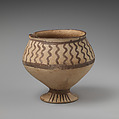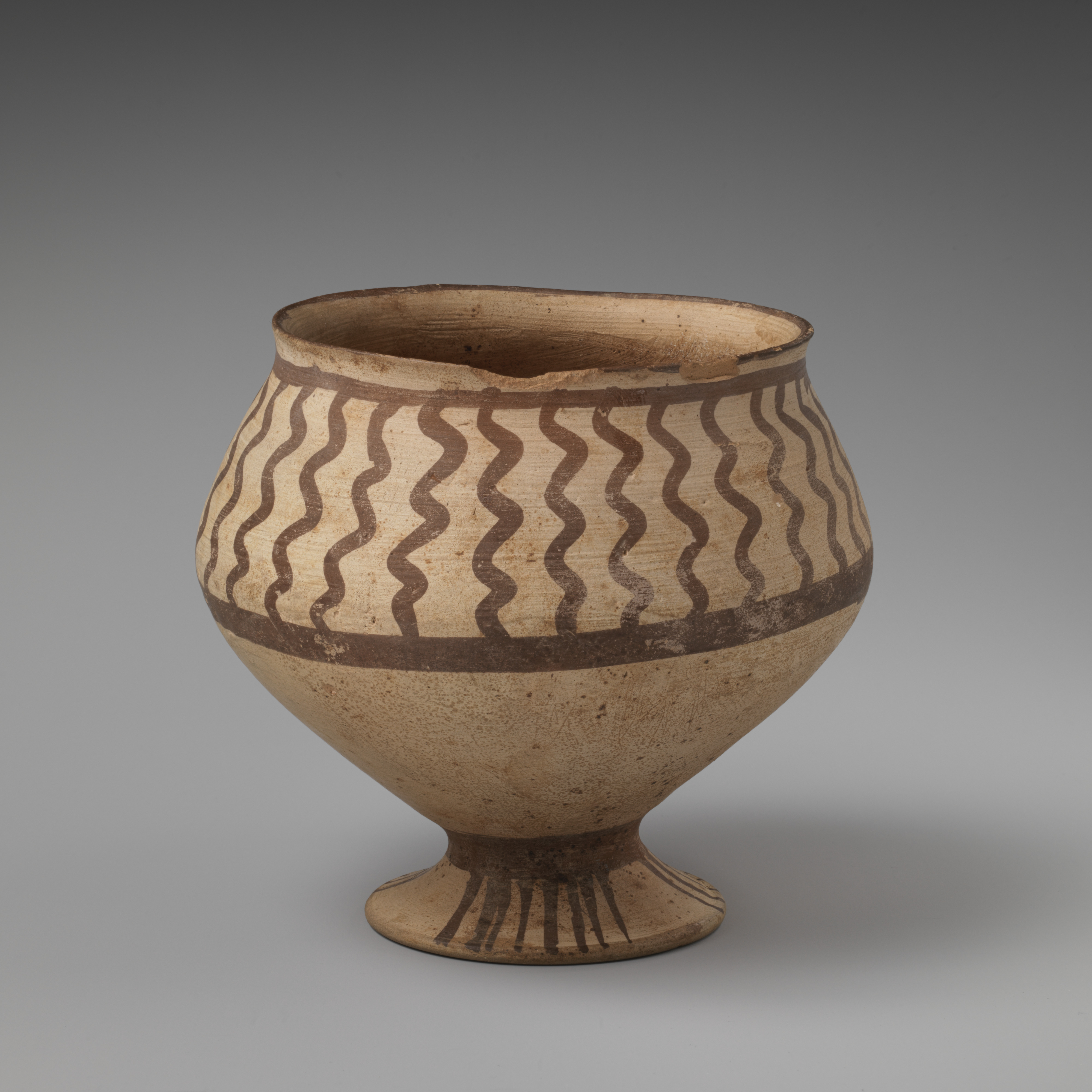Cup
Not on view
This biconical cup has a bulging body, a wide mouth, a slightly flaring rim, and a small foot. It is made of a buff clay, with brown decorations, namely wavy vertical lines on the upper part of the vessel and straight radial lines on the foot. Wheel lines on the interior indicate it was made on a potter’s wheel.
This cup was excavated at Tepe Hissar, near the modern city of Damghan in northern Iran. Tepe Hissar was primarily an agricultural settlement, though much of the evidence for plant cultivation dates to later periods, with buildings made of mudbrick or simply mud walls. This cup belongs to the Hissar IC/IIA period, dating to ca. 3980-3865 B.C. on the basis of radiocarbon dating. During this period there was a lively and technically proficient ceramic industry at the site, producing well-formed vessels decorated with geometric designs and stylized images of ibexes, gazelles and birds. But it is not known what these vessels were used for.
Due to rights restrictions, this image cannot be enlarged, viewed at full screen, or downloaded.
This artwork is meant to be viewed from right to left. Scroll left to view more.



